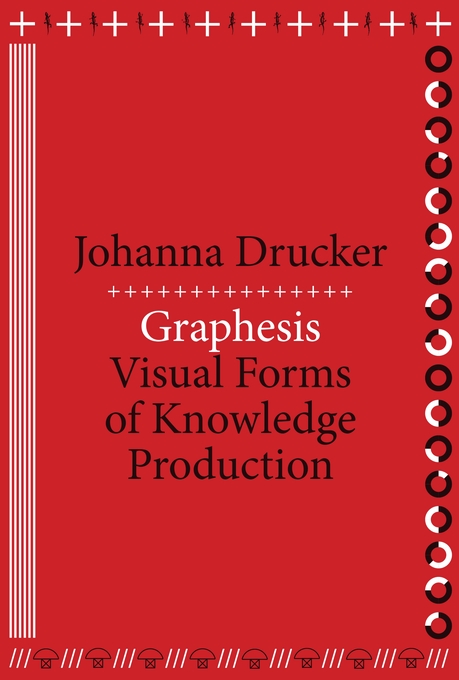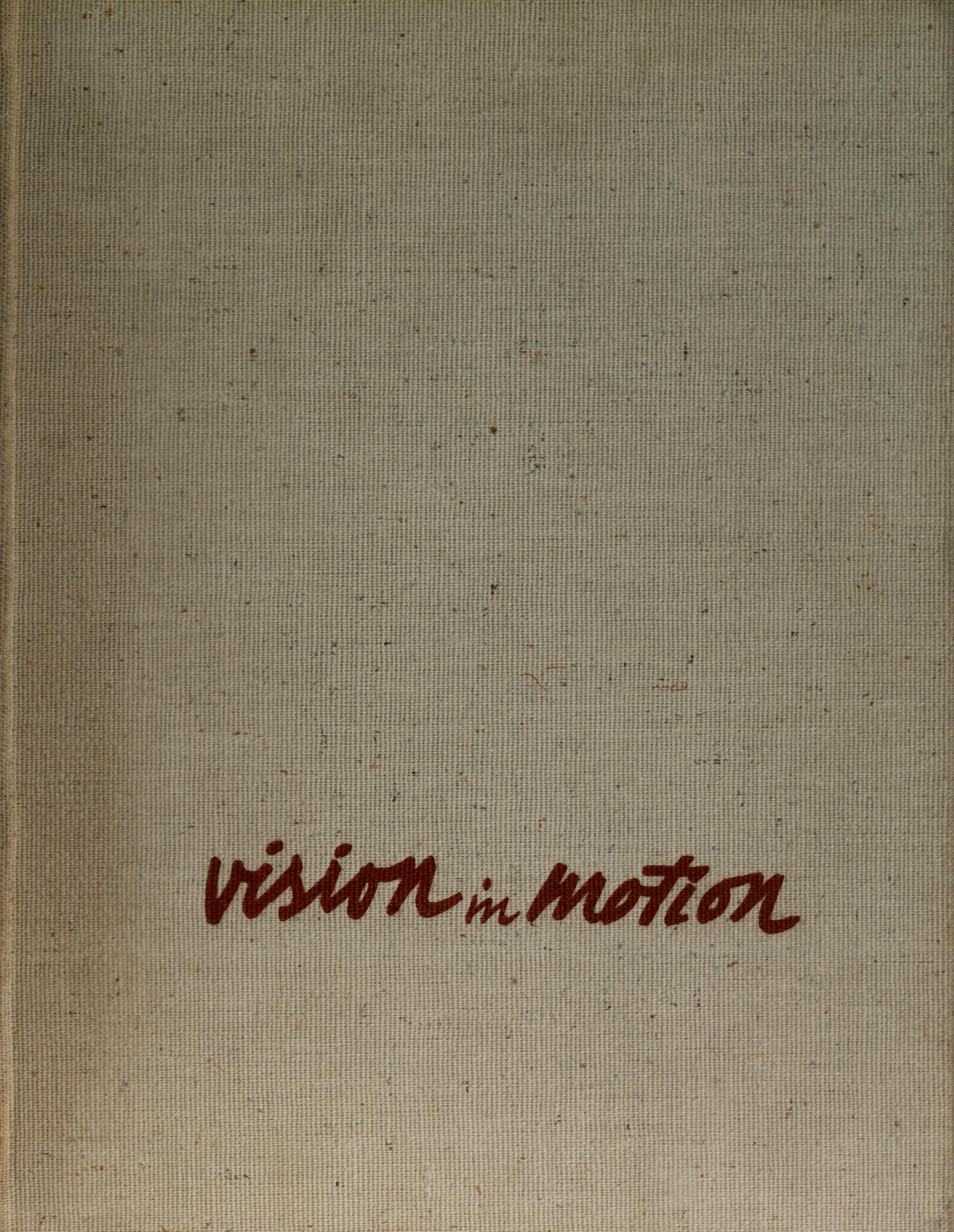Johanna Drucker: Graphesis: Visual Forms of Knowledge Production (2014)
Filed under book | Tags: · data visualisation, design, graphic design, image, interface, visual communication

“In our current screen-saturated culture, we take in more information through visual means than at any point in history. The computers and smart phones that constantly flood us with images do more than simply convey information. They structure our relationship to information through graphical formats. Learning to interpret how visual forms not only present but produce knowledge, says Johanna Drucker, has become an essential contemporary skill.
Graphesis provides a descriptive critical language for the analysis of graphical knowledge. In an interdisciplinary study fusing digital humanities with media studies and graphic design history, Drucker outlines the principles by which visual formats organize meaningful content. Among the most significant of these formats is the graphical user interface (GUI)—the dominant feature of the screens of nearly all consumer electronic devices. Because so much of our personal and professional lives is mediated through visual interfaces, it is important to start thinking critically about how they shape knowledge, our behavior, and even our identity.
Information graphics bear tell-tale signs of the disciplines in which they originated: statistics, business, and the empirical sciences. Drucker makes the case for studying visuality from a humanistic perspective, exploring how graphic languages can serve fields where qualitative judgments take priority over quantitative statements of fact. Graphesis offers a new epistemology of the ways we process information, embracing the full potential of visual forms and formats of knowledge production.”
Publisher Harvard University Press, 2014
metaLABprojects series
ISBN 0674724933, 9780674724938
215 pages
Reviews: Scott McLemee (Inside Higher Ed 2014), Maggie Sattler (Zeteo 2014), Cory Taylor (2014), Johannah Rodgers (Brooklyn Rail 2015).
PDF, PDF (17 MB, updated on 2016-8-15)
See also Drucker’s 2010 Graphesis article.
Comment (0)Visible Language (1967–)
Filed under journal | Tags: · art, avant-garde, computer graphics, design history, design research, graphic design, information design, interface, language, media design, reading, typography, visual communication, writing



Visible Language is the oldest peer–reviewed design journal, first published in 1967. For it’s first four years, it was published under the title The Journal of Typographic Research.
The primary tenet of its foundation was that reading and writing together form a new, separate, and autonomous language system. From its initial focus on typography, it has evolved with the changing landscape of communication design to embrace interdisciplinary relationships with anthropology, art, design, education, English and linguistics. The journal has covered subjects such as concrete poetry, artists’ books, Fluxus, painted text, textual criticism, the abstraction of symbols, articulatory synthesis and text, and the evolution of the page from print to on-screen display.
Visible Language was founded by Merald Wrolstad who served as editor and publisher until 1987. The following 26 years (1987-2012) it was edited by Sharon Poggenpohl of the Illinois Institute of Technology’s Institute of Design, with administrative offices at the Rhode Island School of Design. Currently, it is edited by Mike Zender of the University of Cincinnati, which publishes and provides administrative offices for the journal.
Edited by Merald E. Wrolstad (1-80), Sharon Poggenpohl (81-155), Mike Zender (156-)
Publisher Merald E. Wrolstad (1-80), Sharon Poggenpohl (81-155), University of Cincinatti (156-)
ISSN 0022-2224
via Stéphanie Vilayphiou, via Natacha Roussel
Announcement about the journal going open access
PDFs of issues 1–157 (with abstracts in HTML, PDFs of some issues missing)
Special issues:
40 Spelling, ed. Richard L. Venezky
44 Barthes: Beyond the Empire of Signs, ed. Steven Ungar
45 The Interface of Reading and Listening, ed. Dominic W. Massaro
51 Behavioural Studies of the Handwriting Skill, ed. Alan M. Wing
52 Theory, Research, Experiment, ed. Sharon Helmer Poggenpohl
57 Spatial Factors in Typography, ed. James Hartley
58-59 Visual Cues in Word Recognition and Reading, Part 2, ed. Keith Rayner
65 Calligraphy, ed. Gunnlaugur SE Briem
66 The Renascence of Die Hermeneute, ed. Charles Robert Kline, Jr.
70 Some Effects of Communications Medium on Visible Language, ed. Patricia Wright
71 Aspects of the Japanese Writing System, ed. Chris Seeley
72 Psychological Processes in Reading, ed. Dominic W. Massaro
73 ATyp1, ed. Charles Bigelow
74 Graphic Design Computer Graphics, ed. Sharon Helmer Poggenpohl
76 The Book, Inside and Out, ed. Judith Preckshot
77 Pattern Poetry: A Symposium, ed. Dick Higgins
78 Promoting Plain English, ed. Erwin R. Steinberg
79 The Origins and Functions of Literacy, eds. David Olson & Derrick De Kerckove
81 Bi-Graphic Differences: Languages in Con(tact)(flict), ed. Richard Hodgson
83 Then and Now: Readers Learning to Write, ed. E. Jennifer Monaghan
84 The Avant-Garde and the Text, ed. Stephen C. Foster
85 Lipreading, ed. Ruth Campbell
86 Literacy Literacy, ed. Sharon Helmer Poggenpohl
87 Instant Theory: Making Things Popular, ed. Craig Saper
88 The Printed Poem and the Reader, ed. Richard Bradford
89 Inscriptions in Paintings, ed. Claude Gandelman
95 The Artist’s Book: The Text and Its Rivals, ed. Renée Riese Hubert
97 Fluxus: A Conceptual Country, ed. Estera Milman
98 Diagrams as Tools for Worldmaking, ed. Sharon Helmer Poggenpohl
99 Writing in Stereo: Bilingualism in the Text, ed. Richard Hodgson
101 Visual Poetry: An International Anthology, ed. Harry Polkinhorn
104-106 New Perspectives: Critical Histories of Graphic Design, Part 2, Part 3, ed. Andrew Blauvelt
107 The Luminous Object: Video Art/Video Theory, ed. Andrew Blauvelt and Herman Rapaport
108 Money!, ed. Sharon Helmer Poggenpohl
110 New Media Poetry, ed. Eduardo Kac
119-120 Words in Space, Part 2, ed. Sharon Helmer Poggenpohl
123 Voicimage, ed. Enzo Minarelli
125 Limits of Language, Limits of Worlds, ed. Dietmar Winkler
127 An Annotated Design Research Bibliography, ed. Praima Chayutsahakij
131 Instruction and Provocation, or Relearning from Las Vegas, ed. Michael Golec
137 Fluxus and Legacy, ed. Ken Friedman
138 Fluxus After Fluxus, ed. Ken Friedman
143 Visual Metaphors in User Support, ed. Karel van der Waarde
144 After the Grave: Language and Materiality in Contemporary Art, ed. David Scott Armstrong
148-149 Communication Design Failures, Part 2, ed. Sharon Poggenpohl and Dietmar R. Winkler
150 Global Interaction in Design, ed. Audrey Grace Bennett
152 Punctuation, ed. Anne Toner
154 Envisioning a Future Design Education, ed. Sharon Poggenpohl
L. Moholy-Nagy: Vision in Motion (1947)
Filed under book | Tags: · abstraction, architecture, art, art education, bauhaus, biology, design, film, image, industrial design, life, light, literature, machine, motion, painting, perception, photography, poetry, sculpture, technology, visual communication, visual poetry

“This book is written for the artist and the layman, for everyone interested in his relationship to our existing civilization. It is an extension of my previous book, The New Vision. But while The New Vision gave mainly particulars about the educational methods of the old Bauhaus, Vision in Motion concentrates on the work of the Institute of Design, Chicago, and presents a broader, more general view of the interrelatedness of art and life.” (from the author’s foreword)
Publisher Paul Theobald, Chicago, 1947
371 pages
PDF (114 MB, no OCR)
Comments (2)
